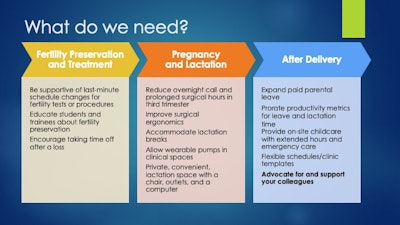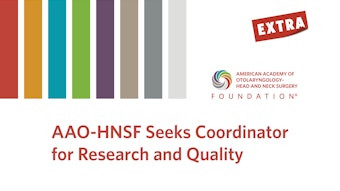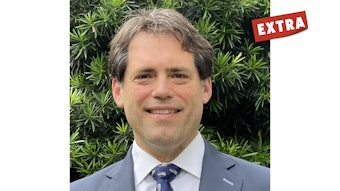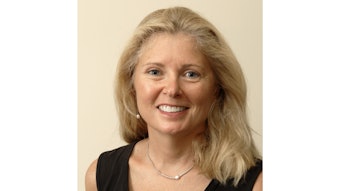Motherhood in Otolaryngology: Managing Family Planning, Fertility, and Lactation
Major progress is needed within institutional cultures, practices, and policies to catch up with the new demographics of otolaryngology and provide better support for individuals who are building their families.
Caitlin McMullen, MD, and Laura M. Dominguez, MD

Delayed family building contributes to fertility challenges, which are greater for otolaryngologists than other surgeons and the general population. In a survey of over 1,000 female surgeons, 29% of otolaryngologists experienced infertility—roughly three times the rate in the general population.5 Fertility work-up and treatment is costly and time-consuming. Basic initial evaluation for infertility includes ovarian reserve testing (i.e., anti-mullerian hormone, basal follicle-stimulating hormone, and antral follicle count), ovulatory function via serum progesterone measurement, and evaluation of structural abnormalities. These evaluations and treatments are rarely covered by typical health insurance plans. In vitro fertilization costs typically begin at $20,000, depending on the region and treatments required. Early fertility preservation such as egg freezing and increased knowledge of these costs to facilitate financial planning may help mitigate the impact of these challenges for the individual. Surgical schedule adjustments, such as later starts, may be required to facilitate appointments.
Pregnancy itself can also present challenges. In a national survey of 850 female physicians in the United States, 48% reported major pregnancy complications. Risk factors were operating more than 12 hours per week during the third trimester and maternal age >35.6 Forty-two percent of survey respondents reported pregnancy loss with 75% taking no leave following the loss.6 No data currently exist regarding optimal ergonomics for pregnant surgeons. Supportive floor mats, compression stockings, cooling vests, use of a smoke evacuator, sitting during surgeries, frequent breaks, and maternity-fitted scrubs may optimize a surgeon’s ability to continue comfortably and safely operating during pregnancy. Other potential ways to reduce the risk of pregnancy complications include decreasing clinical volumes, limiting overnight call in the third trimester, factoring in break time on long OR days, and implementation of a back-up call system later in pregnancy. Adjustments should be customized to the pregnant individual’s needs, as one size does not fit all.
Although pregnancy over the age of 35 has additional risks, few female physicians (8%) reported receiving any formal education about pregnancy in advanced maternal ages and fertility preservation.7 Those that did receive education were significantly less likely to experience pregnancy complications such as miscarriage or preterm birth.
Additional challenges present after delivery. Access to acceptable paid family leave is limited in the United States. The Family Medical Leave Act provides for 12 weeks of unpaid leave for institutions with more than 50 employees, usually for individuals who have been employed for a minimum of one year. Short-term disability policies and unused vacation time may partly cover the financial impact, but these typically do not cover the entire lost salary, or they significantly limit leave time. Certain employers provide paid maternity and parental leave. Covering partners typically do not receive any additional compensation, which affects the group culture and support for leave-taking. It is essential to inquire about maternity and parental leave practices and policies when interviewing for a new position. Gender-neutral policies may encourage leave use and decrease stigma. Transparency about how leave may affect productivity metrics, such as prorating work relative value units, is critical so that physicians can prepare for the potential financial impact of taking leave. Even if you or your partner do not expect to use it, the presence and transparency of these policies may imply broader support for the needs of diverse employees.
Lactation is another major hurdle for those returning to work. Although the American Academy of Pediatrics, World Health Organization, UNICEF, and American College of Gynecology recommend breastfeeding for at minimum the first six months of life, most women physicians are unable to meet their breastfeeding goals because of insufficient lactation facilities, lack of time, productivity concerns, discrimination, and challenges leaving the OR to express milk.8-10 Milk expression is required typically every 2-4 hours for the first year after delivery to maintain supply and prevent complications such as mastitis.
Time to set up, pump, clean pump parts, and store milk is typically about 30 minutes, but this varies by individual. The use of wearable pumps may help some physicians, but these do not work well for all. Access to a convenient space with a computer or workstation, a refrigerator, sink, locked door, hospital-grade pumps and supplies, and breaks built into clinic templates would help support lactating clinicians reach their lactation goals and support their retention in the workplace.
Limited access to reliable and affordable childcare can affect professional engagement and retention. Women clinicians are significantly more likely to have a partner who works outside the home compared with men clinicians, and the burden of childcare logistics and domestic responsibilities more frequently fall on the woman.11-14 Multilayered and costly solutions are often required such as nannies (often more than one), daycare, an au pair, or a combination of these when initial plans fall through. The availability of on-site daycare with extended hours and emergency care serves as a significant recruitment tool and supports the needs of families with diverse structures.
Academic productivity is also a concern for women surgeons who are building their families. At many institutions, academic productivity is tied to compensation and promotion schedules. So, a drop in productivity can negatively impact one’s financial outlook. Childcare and domestic responsibilities limit the ability to perform academic endeavors outside of typical business hours. Men otolaryngologists tend to have higher h-indices, number of documents, citations, and co-authors compared with women otolaryngologists. Gaps are most notable in the subspecialties of head and neck, laryngology, and pediatric otolaryngology.15 Productive years may be bimodal, with higher productivity for women in later career years when children are older.16 Active mentorship and sponsorship of women, material research support, protected academic and administrative time, and reduced electronic medical record burdens can help improve the academic productivity of women otolaryngologists in early career.
Major progress is needed within institutional cultures, practices, and policies to catch up with the new demographics of otolaryngology. Culture change requires ongoing education, advocacy, and meaningful effort at every level. Better support for individuals who are building their families would directly improve the retention of highly skilled surgeons in our field.
 Figure 1. Actions needed to provide better support for family-building.
Figure 1. Actions needed to provide better support for family-building.
References
- Ukatu, Ceisha C., Lauren Welby Berra, Qiwei Wu, and Christine Franzese. “The State of Diversity Based on Race, Ethnicity, and Sex in Otolaryngology in 2016.” The Laryngoscope 130, no. 12 (2019). https://doi.org/10.1002/lary.28https://doi.org/10.1002/lary.28447.
- Grose, Elysia, Tanya Chen, Jennifer Siu, Paolo Campisi, Ian J Witterick, and Yvonne Chan. “National Trends in Gender Diversity Among Trainees and Practicing Physicians in Otolaryngology-Head and Neck Surgery in Canada.” JAMA Otolaryngology-- Head & Neck Surgery 148, no. 1 2022): 13–19. https://doi.org/10.1001/jamaoto.2021.1431https://doi.org/10.1001/jamaoto.2021.1431.
- Smith, Joshua B., Alexander G. Chiu, Kevin J. Sykes, Lindsey P. Eck, Anneliese N. Hierl, and Jennifer A. Villwock. “Diversity in Academic Otolaryngology: An Update and Recommendations for Moving From Words to Action.” Ear, Nose & Throat Journal 100, no.10 (2020): 702–9.https://doi.org/10.1177/0145561320922633https://doi.org/10.1177/0145561320922633.
- Saadoun, Rakan, Eva-Maria Risse, Leen Sadoun, Abdallah Kamal, Annett Pudszuhn, and Theresa Obermueller. “Gender Distribution and Women Leadership in German Otolaryngology, Head and Neck Surgery.” Laryngoscope Investigative Otolaryngology 8, no. 2 (2023): 426–34. https://doi.org/10.1002/lio2.1050https://doi.org/10.1002/lio2.1050.
- Phillips, Elizabeth A., Tony Nimeh, Julie Braga, and Lori B. Lerner. “Does a Surgical Career Affect a Woman’s Childbearing and Fertility? A Report on Pregnancy and Fertility Trends among Female Surgeons.” Journal of the American College of Surgeons 219, no. 5 (2014): 944–50. https://doi.org/10.1016/j.jamcollsurg.2014.07.936https://doi.org/10.1016/j.jamcollsurg.2014.07.936.
- Rangel, Erika L, Manuel Castillo-Angeles, Sarah Rae Easter, Rachel B Atkinson, Ankush Gosain, Yue-Yung Hu, Zara Cooper, Tanujit Dey, and Eugene Kim. “Incidence of Infertility and Pregnancy Complications in US Female Surgeons.” JAMA Surgery 156, no. 10 (2021): 905–15. https://doi.org/10.1001/jamasurg.2021.3301https://doi.org/10.1001/jamasurg.2021.3301.
- Lai, Krista, Erin M. Garvey, Cristine S. Velazco, Manrit Gill, Erica M. Weidler, Kathleen van Leeuwen, Eugene S. Kim, Erika L. Rangel, and Gwen M. Grimsby. "High infertility rates and pregnancy complications in female physicians indicate a need for culture change." Annals of Surgery 277, no. 3 (2023): 367-372.
- Rangel, Erika L, Douglas S Smink, Manuel Castillo-Angeles, Gifty Kwakye, Marguerite Changala, Adil H Haider, and Gerard M Doherty. “Pregnancy and Motherhood During Surgical Training.” JAMA Surgery 153, no. 7 (2018): 644–52. https://doi.org/10.1001/jamasurg.2018.0153https://doi.org/10.1001/jamasurg.2018.0153.
- Riggins, Candy, Marc B. Rosenman, and Kinga A. Szucs. “Breastfeeding Experiences Among Physicians.” Breastfeeding Medicine 7, no. 3 (2012): 151–54. https://doi.org/10.1089/bfm.2011.0045https://doi.org/10.1089/bfm.2011.0045.
- Peters, Gabrielle W, Aleksandra Kuczmarska-Haas, Emma B Holliday, and Lindsay Puckett. “Lactation Challenges of Resident Physicians- Results of a National Survey.” BMC Pregnancy and Childbirth 20, no. 1 (2020): 762–762. https://doi.org/10.1186/s12884-020-03436-3https://doi.org/10.1186/s12884-020-03436-3.
- Frank, Elena, Zhuo Zhao, Srijan Sen, and Constance Guille. “Gender Disparities in Work and Parental Status Among Early Career Physicians.” JAMA Network Open 2, no. 8 (2019): e198340–e198340. https://doi.org/10.1001/jamanetworkopen.2019.8340https://doi.org/10.1001/jamanetworkopen.2019.8340.
- 12. Dyrbye, Liselotte N. “Relationship Between Work-Home Conflicts and Burnout Among American Surgeons.” Archives of Surgery 146, no. 2 (2011): 211. https://doi.org/10.1001/archsurg.2010.310https://doi.org/10.1001/archsurg.2010.310.
- Colletti, Lisa M. “Perceived Obstacles to Career Success for Women in Academic Surgery.” Archives of Surgery 135, no. 8 (2000): 972. https://doi.org/10.1001/archsurg.135.8.972https://doi.org/10.1001/archsurg.135.8.972.
- Schroen, Anneke T., Michelle R. Brownstein, and George F. Sheldon. “Women in Academic General Surgery.” Academic Medicine 79, no. 4 (2004): 310–18. https://doi.org/10.1097/00001888-200404000-00006https://doi.org/10.1097/00001888-200404000-00006.
- Okafor, Somtochi, Kathleen Tibbetts, Gopi Shah, Brittny Tillman, Ashley Agan, and Ashleigh A. Halderman. “Is the Gender Gap Closing in Otolaryngology Subspecialties? An Analysis of Research Productivity.” The Laryngoscope 130, no. 5 (2019): 1144–50. https://doi.org/10.1002/lary.28189https://doi.org/10.1002/lary.28189.
- Eloy, Jean Anderson, Peter Svider, Sujana S. Chandrasekhar, Qasim Husain, Kevin M. Mauro, Michael Setzen, and Soly Baredes. “Gender Disparities in Scholarly Productivity within Academic Otolaryngology Departments.” Otolaryngology–Head and Neck Surgery 148, no. 2 (2012): 215–22. https://doi.org/10.1177/0194599812466055https://doi.org/10.1177/0194599812466055.




















